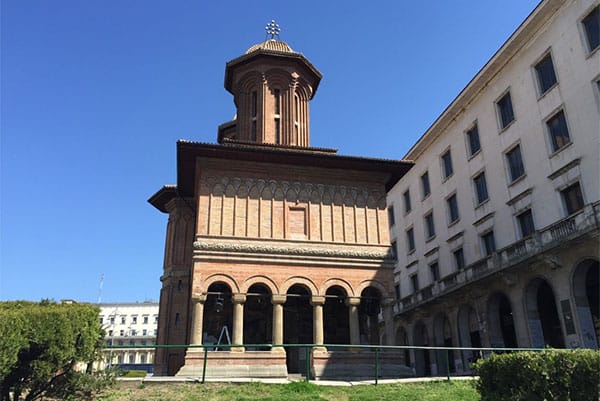
The must-see attractions in Bucharest vary widely in their level of wheelchair accessibility. Some sights, such as the historic Kretzulescu Church, can only be viewed from the outside by wheelchair users. Others, such as the Arcul de Triumf and Cismigiu Gardens, are outdoor attractions that are accessible to everyone. In some cases, disabled travelers may be forced to adapt from the norm to participate in certain experiences, but it is possible to enjoy a trip to the City of Bucharest with some advance planning. See the information below concerning many of the top sights Bucharest has to offer:
Palace of Parliament
Constructed between 1984 and 1997, the Palace of Parliament is a recent addition to the Bucharest city skyline. The building hosts both houses of the Romanian Parliament, in addition to other organizations and divisions of the national government. The National Museum of Contemporary Art and the Museum and Park of Totalitarianism and Socialist Realism are housed within the Palace as well.
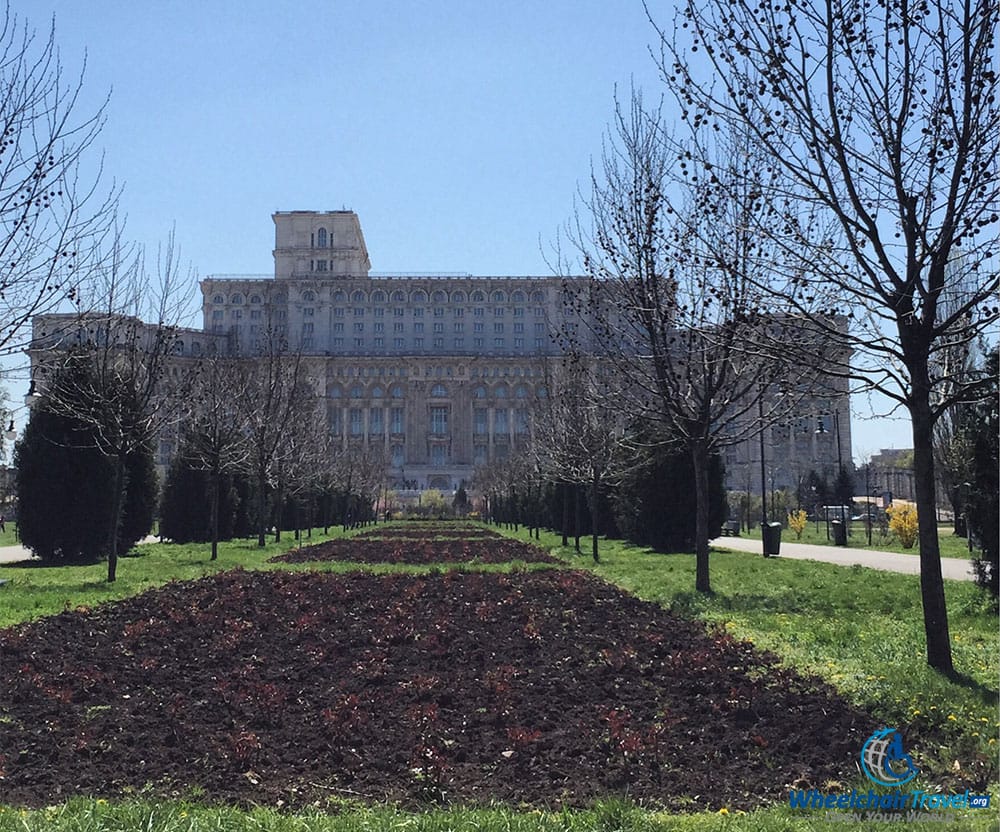
The structure, designed by architect Anca Petrescu, was commissioned by then-dictator Nicolae Ceausescu and is the second largest building in the world, behind the Pentagon in the United States. As of 2014, 70% of the building’s interior remained empty. Tours of the Palace are open to the public and in multiple languages, including English. The building’s interior rivals any royal palace in its finishings with walls and ceilings trimmed with gold and marble.
The building is not accessible in its entirety, but several tour routes of the building are wheelchair friendly, including one which visits the palace’s top floor. Tours should be reserved in advance by contacting the Bucharest International Conference Center. The standard tour bears an admission fee of 25 LEI (about $7 USD). Access to the building’s upper floor is available for an additional 10 LEI. Persons in wheelchairs are granted admission without charge, but the Palace of Parliament should be notified of your wheelchair in advance. For more information on the tour, visit www.cdep.ro.
The most picturesque view of the palace’s exterior is to the North from the Izvor Park, a public green space which has wheelchair accessible paths throughout and sits alongside Splaiul Independentei, a primary roadway that runs across the center of the city.
Cișmigiu Gardens
Parcul Cișmigiu, opened in 1847, is the largest public park in the city center. Spanning 42 acres, the park features the beautiful Cișmigiu Lake, which sits across the park’s width and has several bridge crossings. Among the fixtures within the park is the Writers’ Rotunda, an area featuring busts of twelve noted Romanian writers. The Monument of French Heroes, installed in 1922, recognizes the French soldiers who lost their lives in the Romanian Campaign of the First World War. Similarly, the park is also home to the Monument of American Heroes, which commemorates the 378 soldiers who sacrificed their lives in Romania during World War II.
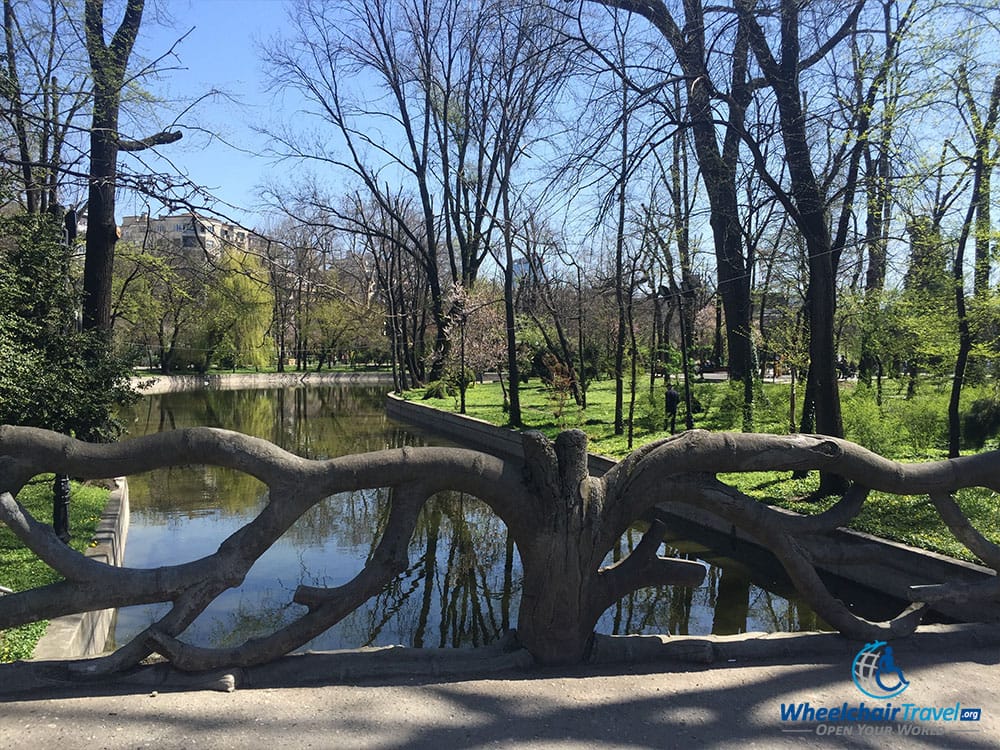
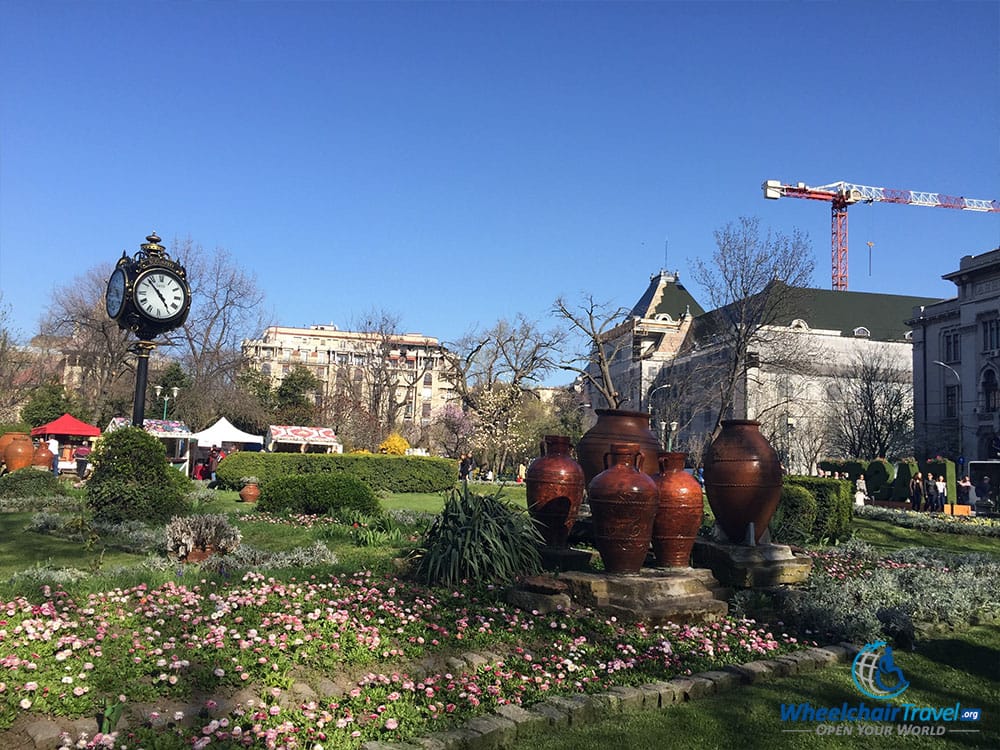
The park is immaculately landscaped and is a gathering place for residents and tourists alike. Pathways running throughout the park and the numerous bridges which cross the lake are fully accessible to wheelchairs. The primary entrance is located in front of City Hall on Regina Elisabeta Boulevard. The largest entrance at the rear of the park requires the use of a stairway, but a small, accessible entrance from a residential side street is located about one block away.
Romanian Athenaeum
The Romanian Athenaeum, or Ateneul Român, is a historic concert hall in the Victory district of Bucharest. The structure, opened in 1888 and extensively rebuilt in 1992, is home to the George Enescu Philharmonic Orchestra.
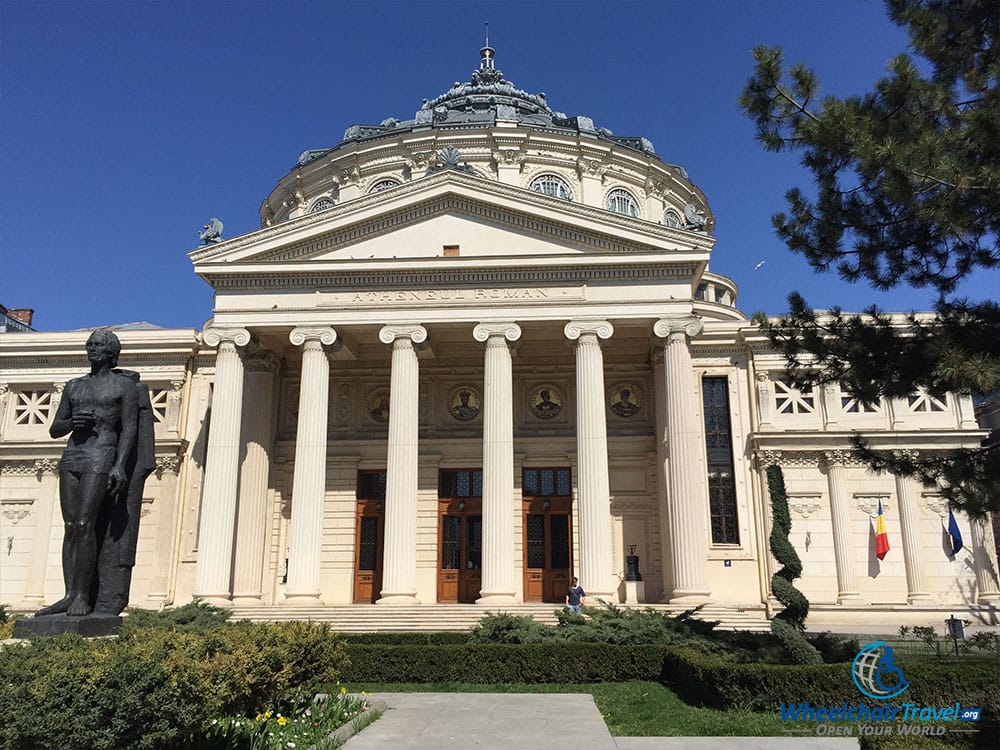
The building is highly ornate, with a large dome at its top. In front of the Atheneum sits a well manicured garden and a statue of the Romanian poet, Mihai Eminescu. The sight is located within walking distance of other popular sights and attractions, including the Cismigiu Gardens, the National Museum of Art of Romania and the Carol I Central University Library. The interior of the concert hall is not wheelchair accessible. Visitors must climb seven steps to access the building’s lobby hall, with additional steps to access the concert hall’s seating areas. The Athenaeum, having survived two world wars, remains a sight that all visitors to the City of Bucharest must see from the outside. More information on the building and the orchestral events it hosts can be found at fge.org.ro/en.
National Museum of Art of Romania
Housed in the former Romanian Royal Palace since 1950, the National Museum of Art of Romania was founded in 1937 and housed at another location. The original palace structure was built between 1812 and 1812 and became the official residence of Wallachian Prince Alexandru Ghica in 1837. King Carol I made the palace his residence in 1866 and began an extensive campaign of renovation and added construction to the property. In 1948, with the Communist takeover in Romania, the palace was nationalized and reopened as the art museum in 1950.
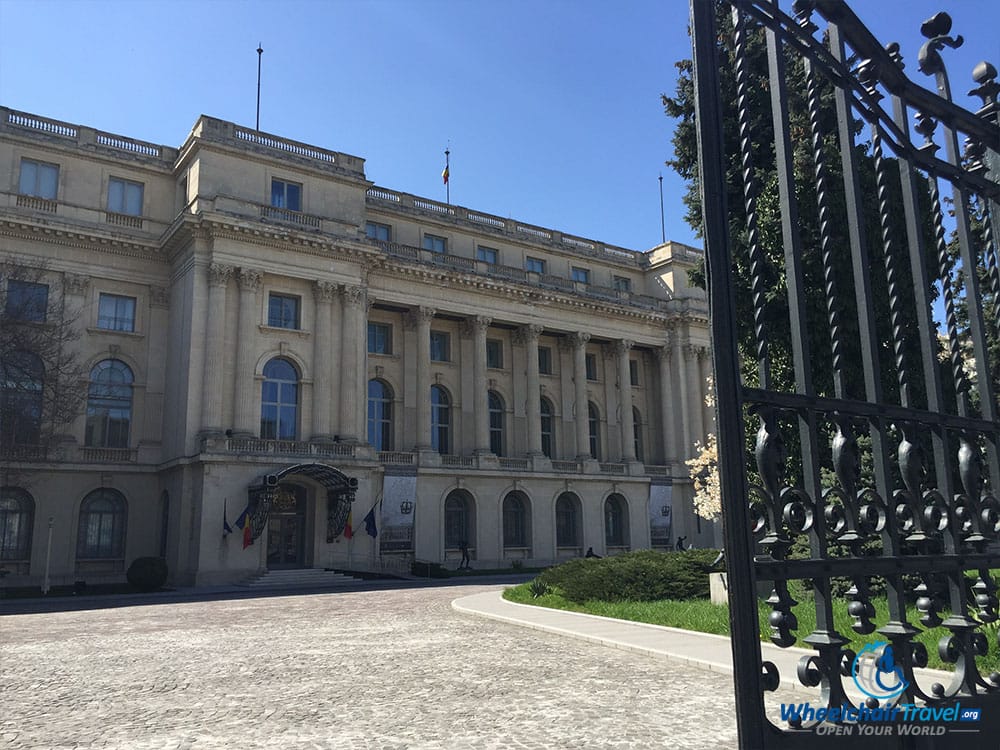
Today, the museum contains the National and European Art Galleries. The National Gallery features collections of Romanian Medieval Art, Romanian Modern Art and a Lapidarium filled with stonework from the past five centuries. Much of the art, stonework and textiles displayed in the National Gallery is of an Orthodox Christian theme. The European Art Gallery is composed primarily of works from the collection of King Charles I and features works from around Europe, including the countries of Denmark, France, Germany, Italy, the Netherlands and Spain. Admission to both galleries is available to adults for 15 LEI. Tickets are often offered free of charge to disabled patrons, but is not an official policy. All exhibition halls and galleries are fully accessible to wheelchair users. Descriptions of the art on display is available in both English and Romanian languages. For additional information on the museum, its hours, policies or collections, visit mnar.arts.ro.
Kretzulescu Church
Located next to the National Museum of National Art of Romania on Victory Avenue (Calea Victoriei), Kretzulescu Church is an Eastern Orthodox Christian Church. Built between 1720 and 1722, the church preceded the former Royal Palace and museum. The building’s facade is made of brick, with frescoes on its front deck which date to its construction. The frescoes found on the interior walls were painted around 1860. Following the Communist takeover in 1948, the structure was set to be demolished, but was preserved due to the appeals from Romanian architects.
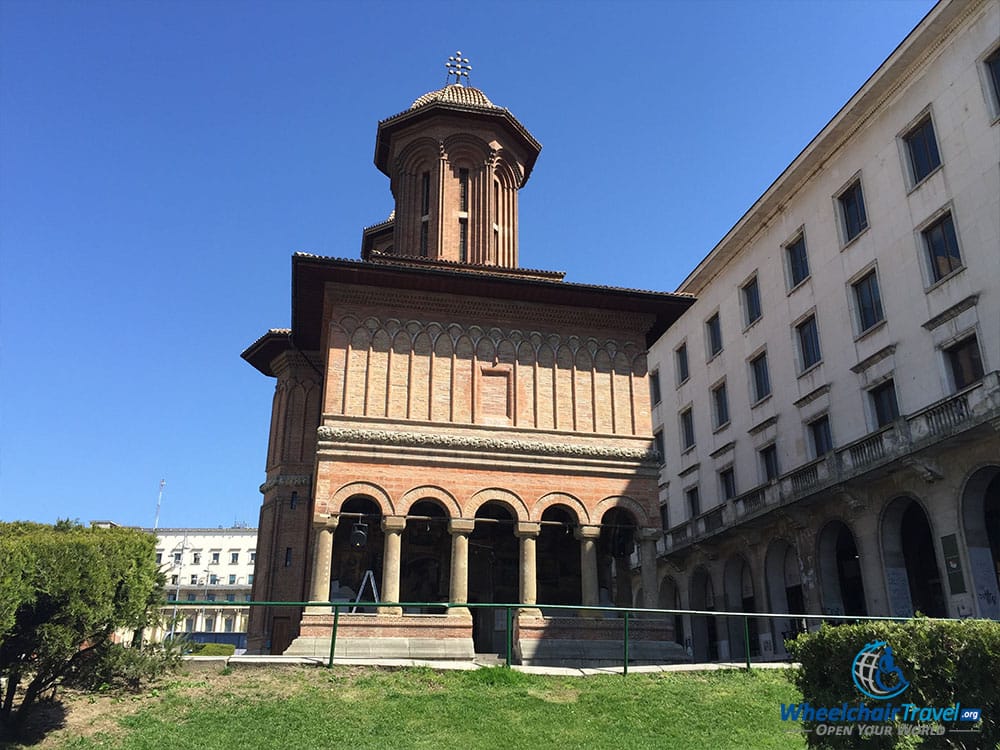
The structure experienced damage due to earthquakes in 1940 and 1977, which led to some reconstruction and renovation. Due to its age, the church has not been modified to be accessible to wheelchairs. Individuals relying on a wheelchair or scooter will not be able to access the interior without negotiating a number of steps. Due to the church’s proximity to the art museum, Romanian Athenaeum and other sights along Victory Avenue, it is at least worth a stop to admire the 18th century architecture and the outer frescoes, which can be seen from the plaza surrounding the building.
Herăstrău Park
Opened in 1939, Herăstrău Park is located in Northern Bucharest surrounding Lake Herăstrău, a product of the Colentina River. The park has carried a number of names since its inception, including Parcul Carol II and Parcul I.V. Stalin. It gained its present name in 1956 as part of the de-Stalinization of Romania. The park is approximately 270 acres in size, of which 172 acres is the lake. The park is filled with sculptures, statues and other attractions. Among these are the Japanese Garden, an open-air theatre, a hotel, restaurant and more. The park also houses the National Village Museum, which showcases and preserves the nature of peasant life from all parts of Romania. The Bucharest Hard Rock Cafe sits alongside the park’s boundary.
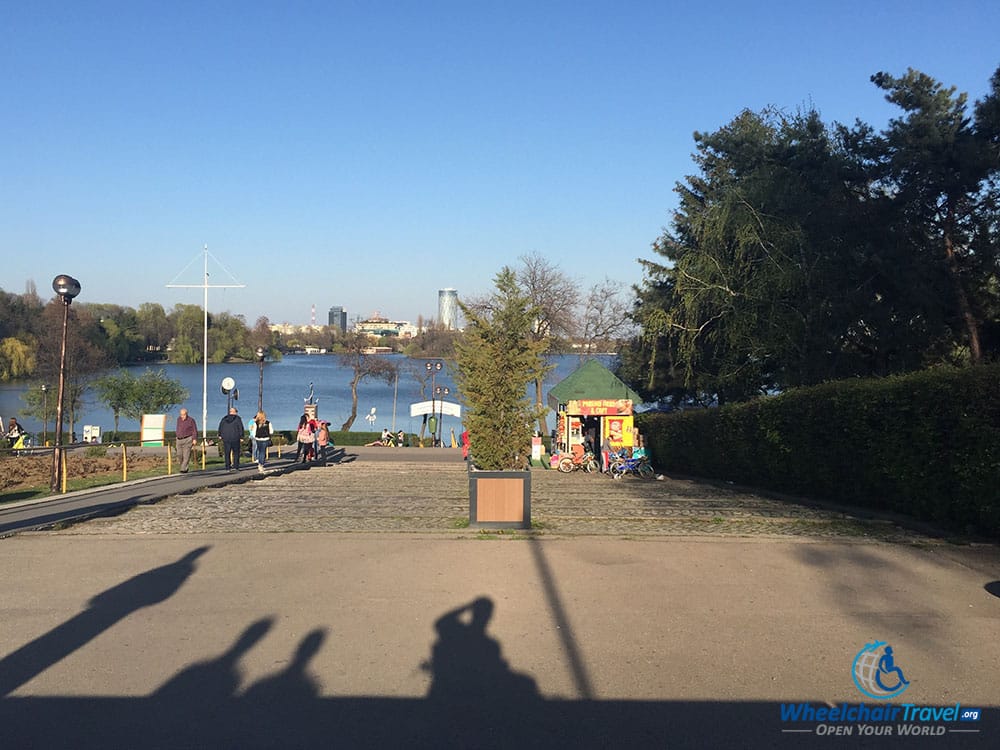
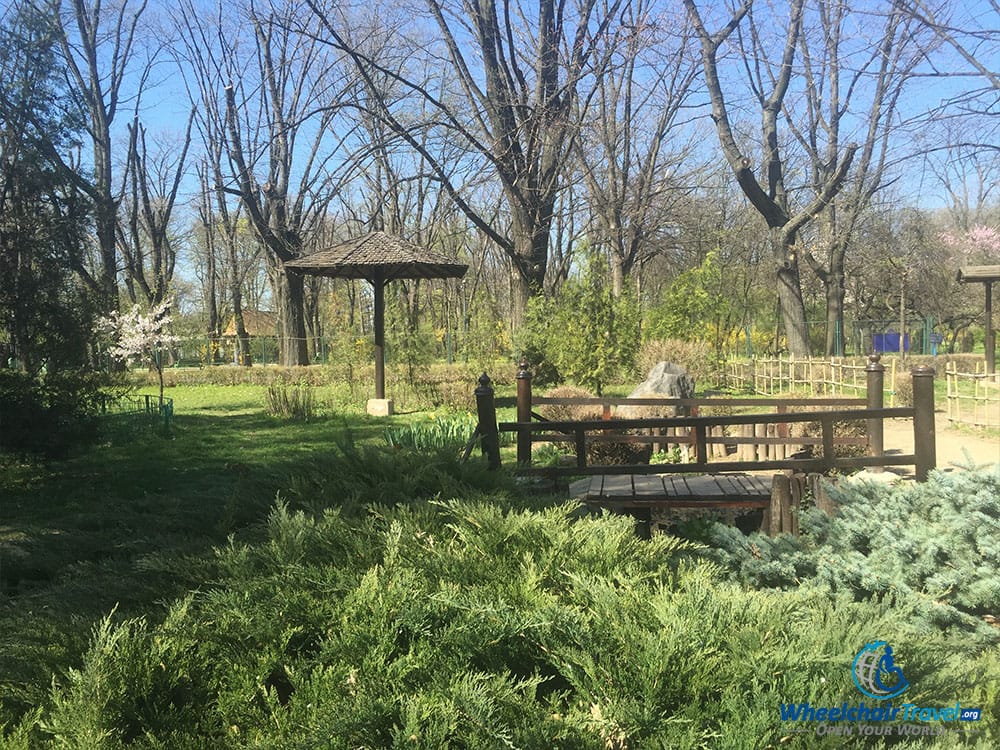
Accessible walkways and bike paths make traversing the park easy for wheelchair users. Portable bathrooms are located throughout the park, including some that are specially designed for wheelchair access. Pedestrian bridges which cross portions of the river are wheelchair accessible, but some do have a rather significant incline. Some paths are made of brick or cobblestone, but most are made of smooth cement or asphalt. For more information on the park and its attractions, consult this Wikipedia article.
Arcul de Triumf
Like many other European cities, Bucharest also has a triumphal arch, the Arcul de Triumf. Located in the Northern part of the city across from Herăstrău Park, the arch has been built, demolished and rebuilt on a number of occasions.
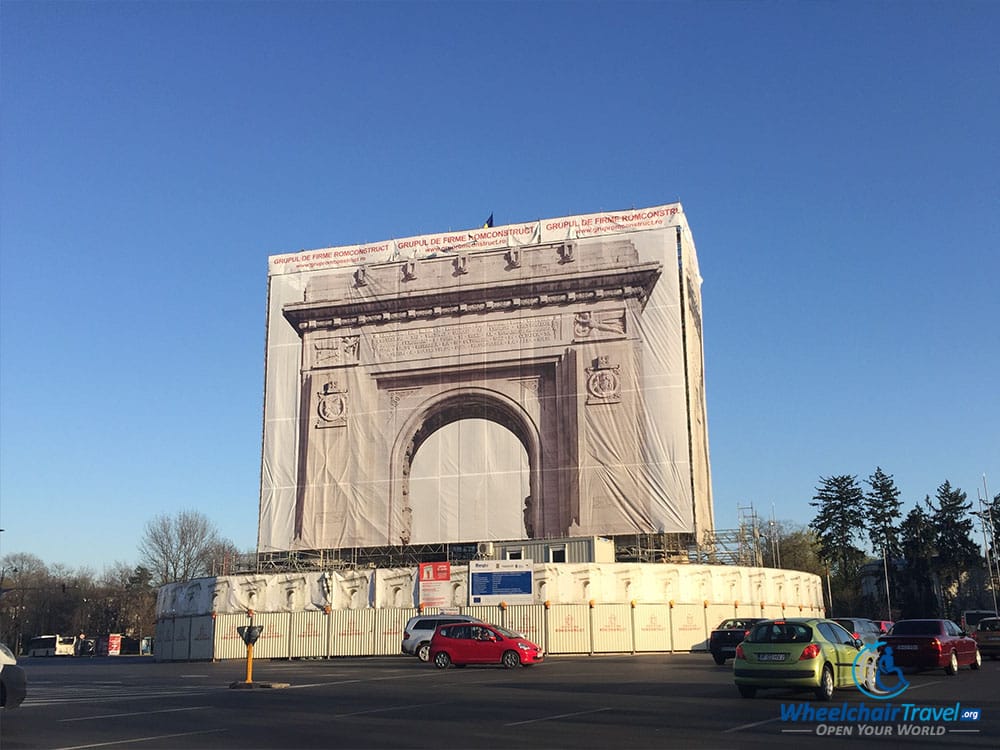
The first arch was made of wood and completed in 1878 to celebrate Romania’s independence from the Ottoman Empire. The second iteration, built in 1922, celebrated victory in World War I. Today, the site is home to the third triumphal arch, made of stone and built in 1936. The arch stands approximately 88 feet tall and is the site of a military celebration each year on December 1, Romania’s national holiday. It is dedicated to the military heroes of the War of Independence and First World War. The arch is easily accessible by city bus and can be viewed by anyone, including those in wheelchairs. As of April 2015, the Arcul de Triumf was covered and undergoing restoration.
National Village Museum
The Dimitrie Gusti National Village Museum, opened in 1936, has preserved and placed on display buildings and other artifacts taken from peasant villages around Romania. Houses, sheds, stables, windmills and even a Church comprise the collection of 272 structures spread across the open-air museum. The museum’s collection also includes tapestries, ceramics, religious artifacts, textiles, garments and other objects taken from peasant homesteads. The museum showcases the nature of peasant life, an important group responsible for sustaining the nation in both the past and today.
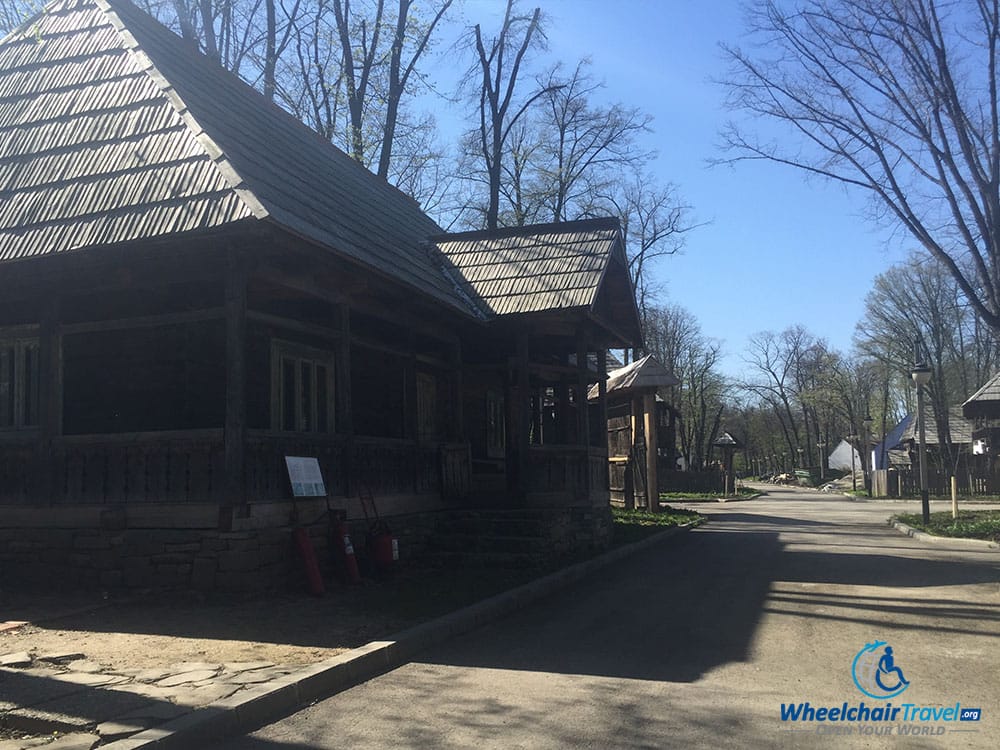
Admission to the museum is provided free of charge. Pathways throughout and around the outdoor installations are wheelchair accessible.
Romanian Patriarchal Cathedral
Built between 1654 and 1658, the Romanian Patriarchal Cathedral is a national historical monument and a functioning Eastern Orthodox Christian church. The cathedral sits atop Patriarchy Hill, to the Southwest of Unirii Square, a major downtown intersection and the location of a major shopping center, Unirea. Surrounding the cathedral are the Patriarchal Palace, residence of the Romanian Patriarch, a bell tower, chapel, and the Palace of the Chamber of Deputies.
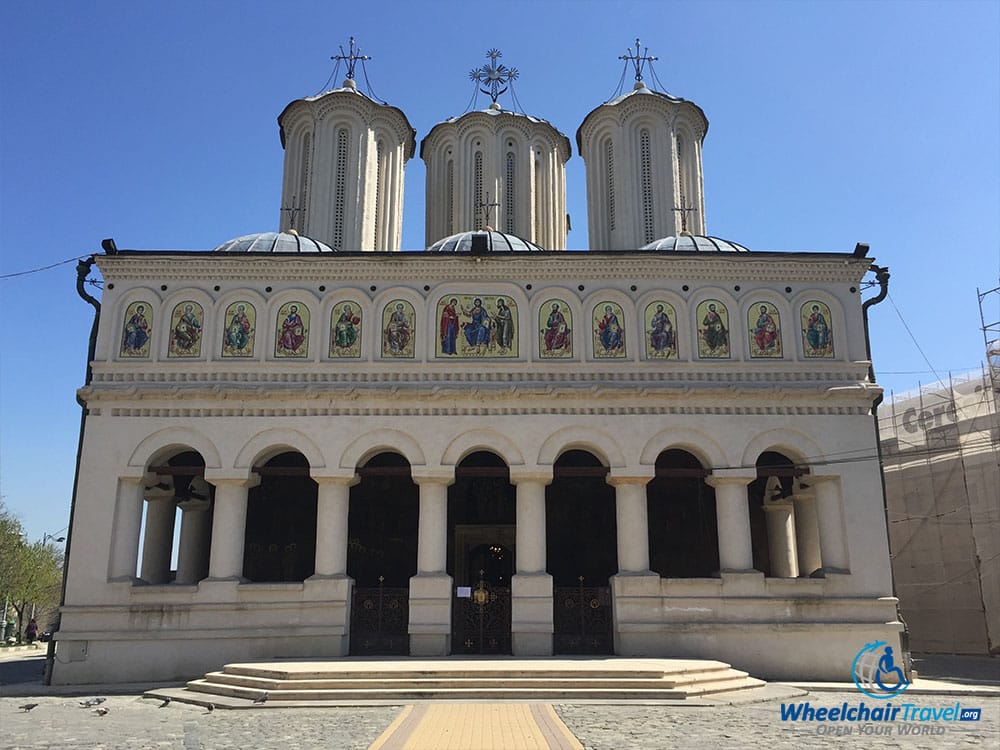
The cathedral was named a national historical monument due to its role in the country’s religious history. It was also the site of the declaration of the country’s independence in 1878, following the war with the Ottoman Empire. The Church grounds are open to the public, but the cathedral’s interior is open only during religious services. A wheelchair ramp exists on the structure’s Southeastern (right) side, but requires the wheelchair to climb a 4-5 inch curb to access it. It will not be difficult to find one or more people to assist you in lifting your chair over this small curb. From there, it is easy to roll up the ramp and into the church. The only way to access Patriarchy Hill and the Cathedral is via a secured street. The sidewalks do not have curb cuts, so wheelchair users will need to roll up the street, which is composed of cobblestones. There is no traffic on this road, it is used only for visitor parking, so there is no danger in rolling up or down. Despite the rough roll and difficulty of the curbed access ramp, a visit to the center of the Romanian Orthodox faith will surely prove to be worth the effort.
Unirii Square & Unirea Shopping Center
Unirii Square, or Unification Square, is a major square at the center of Bucharest, formed from the convergence of Unirii Boulevard, Splaiul Independence and Regina Maria Boulevard.
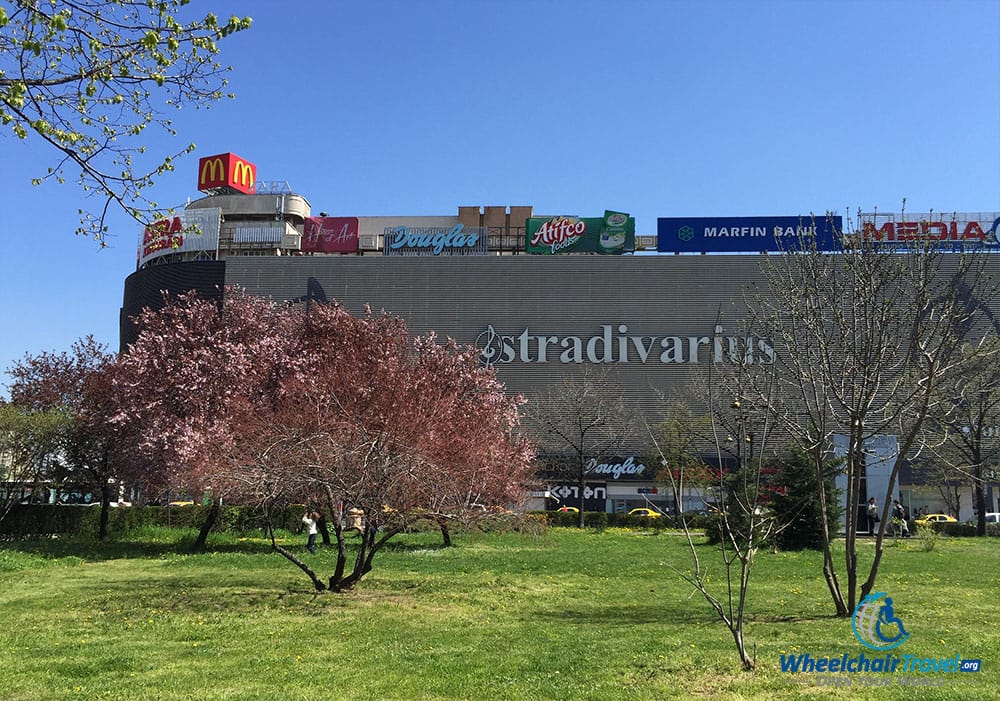
The square features a large fountain which operates during the Summer months and an extensive green space which attracts both locals and tourists. Unirii Square is within walking distance (less than 1 mile) of the Romanian Patriarchal Cathedral, the Palace of Parliament, and the many sights along Victory Boulevard. Situated across from the Parcul Unirii is the Unirea Shopping Center, one of the largest in Bucharest. Unirea is filled with shops and department stores and has a significant number of food options. The shopping center is wheelchair accessible, with elevator access to all floors, and a number of wheelchair accessible restroom facilities are spread throughout. For more information on the shopping center, visit unireashop.ro (Romanian language only).



